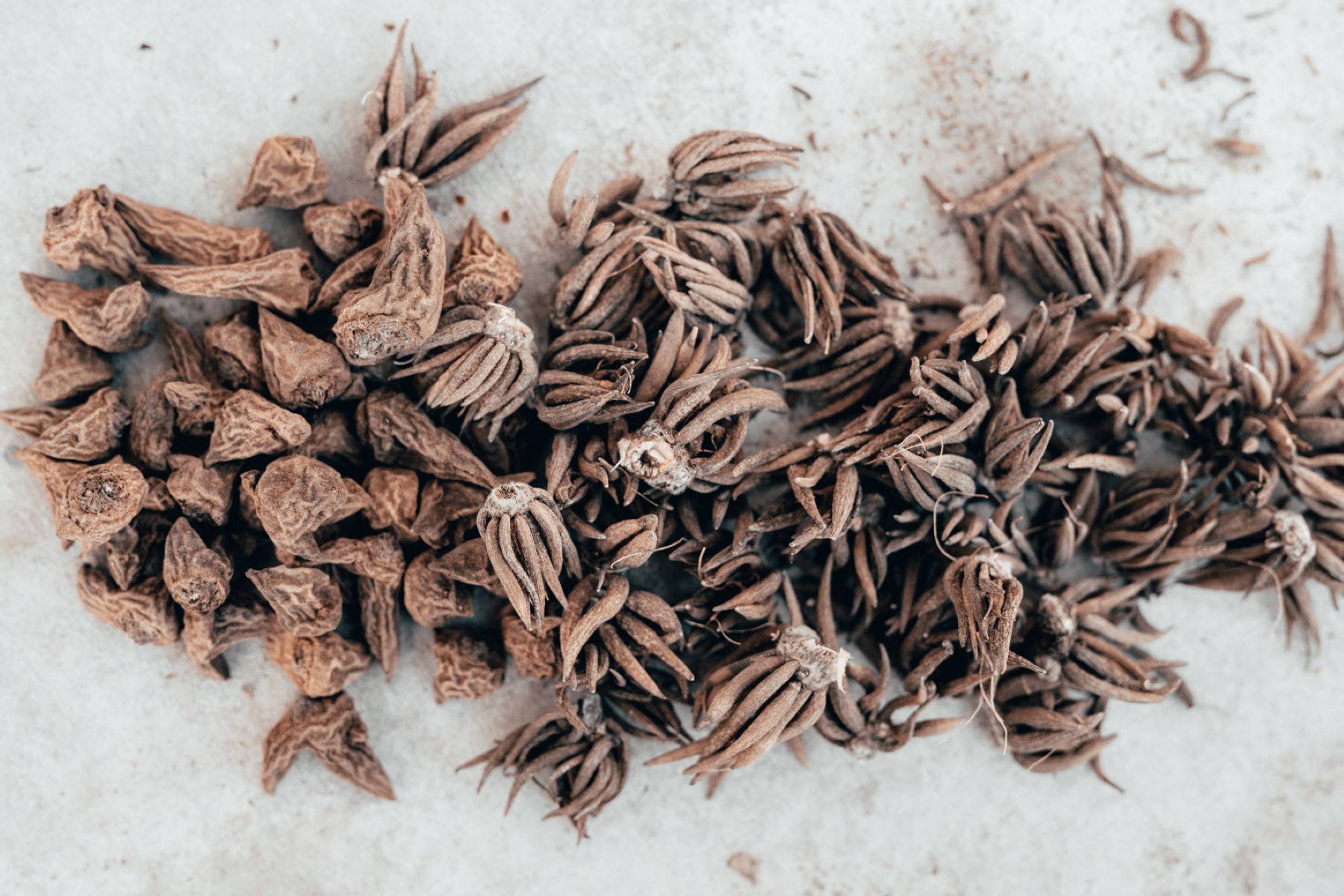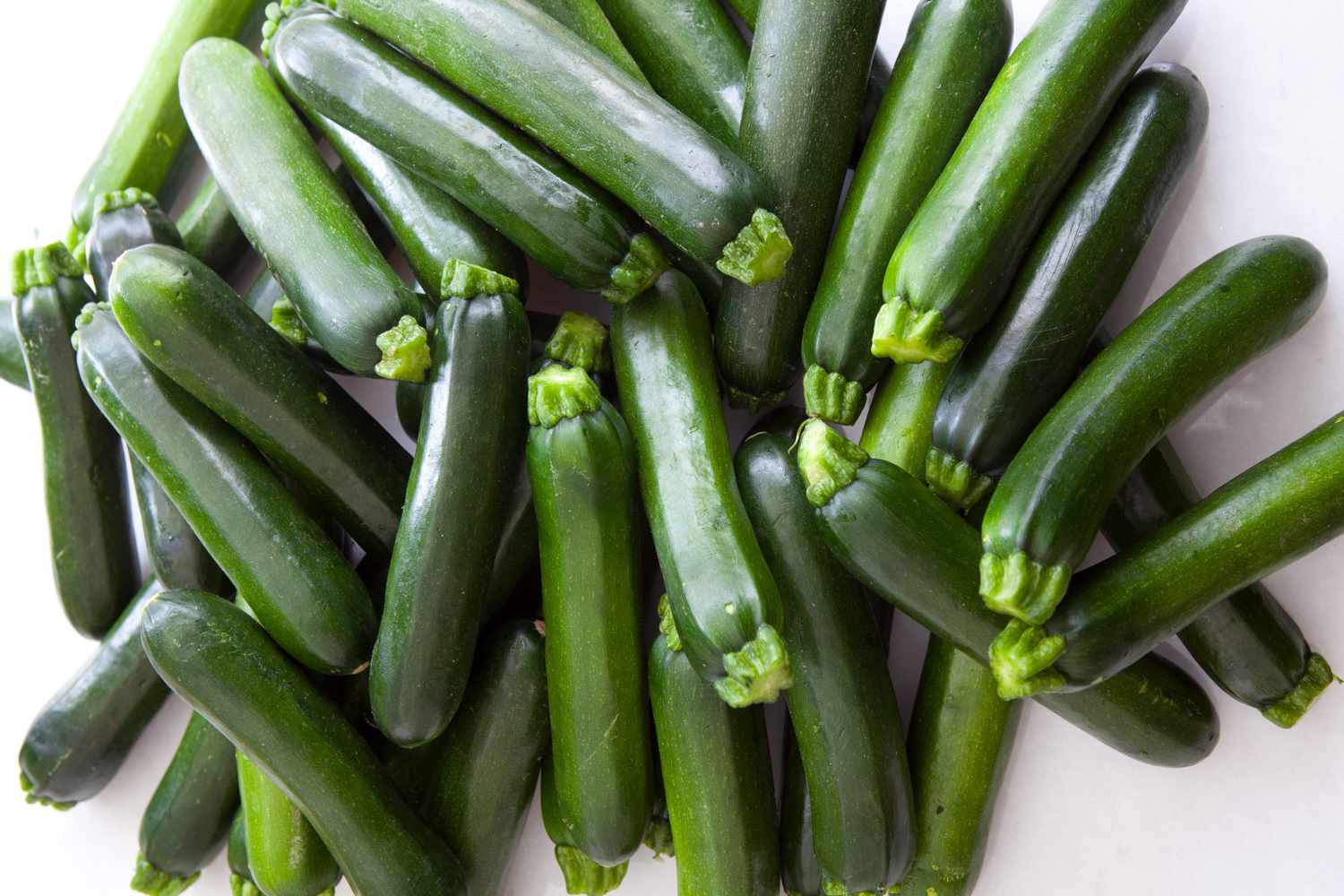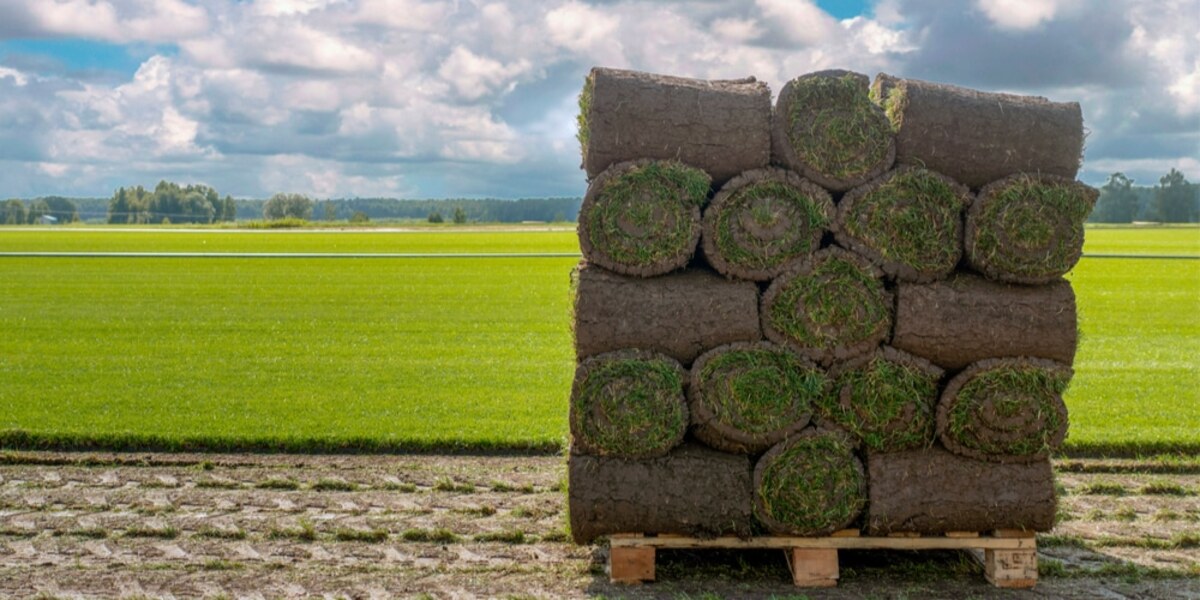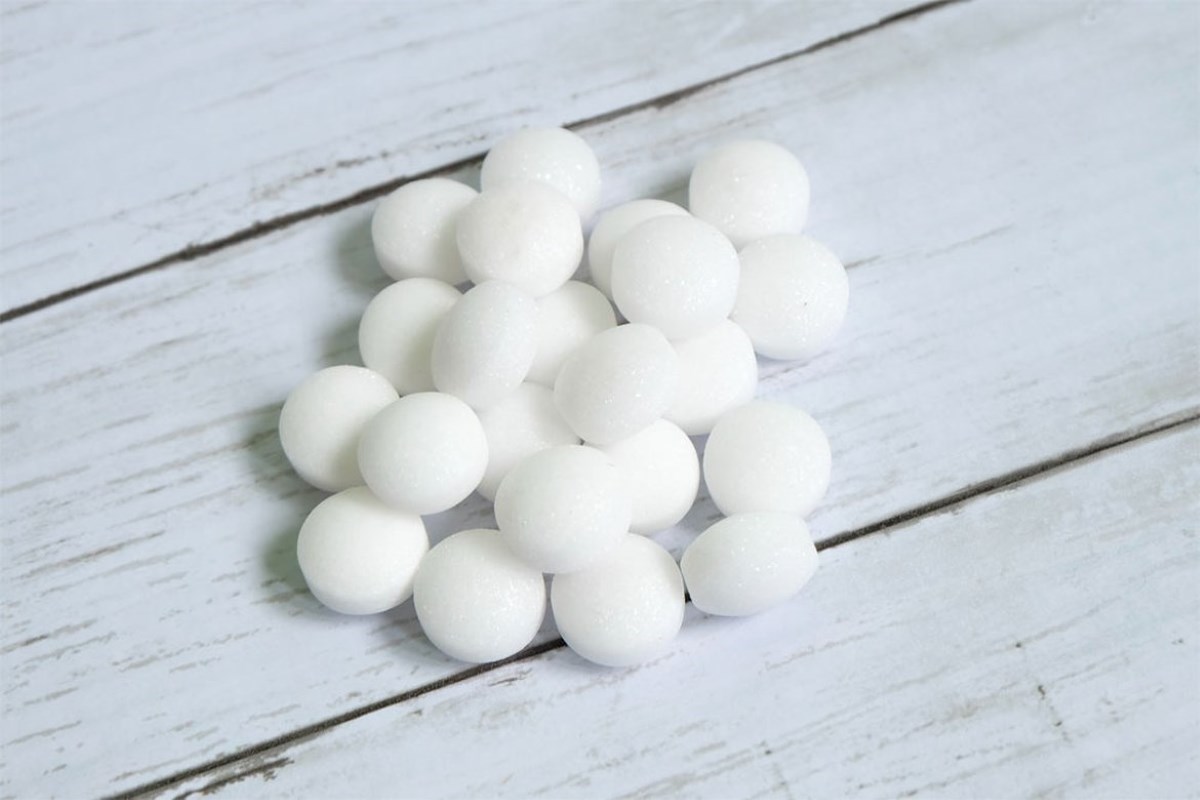

Articles
How To Store Ranunculus Corms
Modified: October 29, 2024
Learn how to properly store ranunculus corms for the best results in this informative articles. Don't miss out on these valuable tips!
(Many of the links in this article redirect to a specific reviewed product. Your purchase of these products through affiliate links helps to generate commission for Storables.com, at no extra cost. Learn more)
Introduction
Welcome to this comprehensive guide on how to store Ranunculus corms! If you’re a gardening enthusiast or a professional horticulturist, you probably know the joy of growing and nurturing these beautiful flowers. Ranunculus, with their vibrant colors and delicate petals, can add a touch of elegance and charm to any garden or floral arrangement.
However, like many other bulbous plants, Ranunculus produce corms as a means of reproduction and survival. These corms contain all the nutrients and energy needed to support the growth of a new plant. If you want to ensure a successful Ranunculus growing season year after year, proper storage of the corms is crucial.
In this article, we will walk you through the step-by-step process of choosing, preparing, and storing Ranunculus corms. We will also discuss the ideal storage conditions and provide some valuable tips to help you maintain the health and vitality of your corms during the winter months.
So, if you’re ready to learn how to store your precious Ranunculus corms and protect your investment in these stunning flowers, let’s dive in!
Key Takeaways:
- Proper storage of Ranunculus corms is crucial for ensuring healthy blooms. Choose firm, healthy corms, provide a cool, dark, well-ventilated storage environment, and monitor for pests and diseases.
- Regularly inspect and maintain proper ventilation for stored corms. Label and organize containers, and keep records of storage conditions to optimize Ranunculus corm storage.
Read more: How To Store Alocasia Corms
What are Ranunculus Corms?
Ranunculus corms are specialized underground storage structures that allow the Ranunculus plants to survive adverse weather conditions and ensure the continuity of their species. These corms are swollen, fleshy, and bulb-like structures that store all the necessary nutrients and energy for the development of new Ranunculus plants.
Ranunculus corms differ from bulbs in their structure and growth habit. While bulbs have layers of modified leaves called scales, corms are solid and have a more fibrous texture. They are formed at the base of the Ranunculus plant and function as the primary source of nutrients for growth and development.
Each Ranunculus corm consists of a basal plate, which is the lower, flattened portion, and a growing point known as the apical bud. The apical bud is responsible for producing the new shoots and leaves of the Ranunculus plant. It is from this bud that the corm produces new corms, allowing for the plant’s reproduction.
One of the main characteristics of Ranunculus corms is their ability to produce multiple stems and flowers from a single corm. This makes them highly desirable for both gardeners and florists. With their showy flowers and numerous petals, Ranunculus corms can create stunning displays in garden beds, borders, containers, or as cut flowers in floral arrangements.
Ranunculus corms come in various sizes, depending on the cultivar and age of the corm. Larger corms generally produce more vigorous and robust plants with a higher flower yield. It’s crucial to select healthy, firm corms for optimal growth and blooming.
Now that we know what Ranunculus corms are and their importance to the plants’ survival and reproduction, let’s explore the steps involved in choosing and preparing corms for storage.
Choosing and Preparing Corms for Storage
When it comes to preparing Ranunculus corms for storage, proper selection and preparation are key. The quality and condition of the corms will directly impact their ability to survive the storage period and produce healthy plants in the following growing season. Here are some steps to help you choose and prepare your Ranunculus corms for storage:
- Choose healthy corms: Select corms that are firm, plump, and free from rot, mold, or any signs of damage. Avoid corms that are shriveled, overly soft, or have blemishes. Healthy corms are more likely to survive the storage period and produce vigorous plants.
- Clean the corms: Gently remove any excess soil or debris from the corms. You can use a soft brush or your hands to gently brush off the dirt. Be careful not to damage the delicate outer skin of the corms.
- Inspect for disease or pests: Take a close look at each corm and check for any signs of disease, such as powdery mildew or fungal growth. Also, look for any pests like aphids or mites. If you notice any infected or infested corms, it’s best to discard them to prevent the spread of disease and pests.
- Dry the corms: Allow the corms to air dry for a few hours in a shaded and well-ventilated area. This helps to remove excess moisture, which can promote rotting during storage.
- Label and organize: Before storing the corms, label them with the variety name and the date of storage. This will help you keep track of the different cultivars and their storage duration. It’s also a good idea to organize the corms in separate containers or bags based on their varieties.
By following these steps, you can ensure that your Ranunculus corms are in optimal condition for storage. Next, let’s explore the ideal storage conditions for Ranunculus corms to maintain their vitality and health.
Proper Storage Conditions for Ranunculus Corms
Creating the right storage environment is crucial for maintaining the health and viability of Ranunculus corms during the dormant period. The following are the proper storage conditions to ensure the longevity of your corms:
- Cool temperature: Ranunculus corms prefer cool temperatures for storage. Aim for a temperature range of 45 to 55 degrees Fahrenheit (7 to 13 degrees Celsius). This helps prevent the corms from drying out or becoming too warm, which can trigger premature growth.
- Darkness: Store the corms in a dark location to minimize exposure to light. Light can stimulate the corms to sprout prematurely, reducing their vitality and energy reserves.
- Air circulation: Proper air circulation is important to prevent the corms from becoming damp and developing fungal infections. Ensure that the storage area is well-ventilated to avoid any moisture buildup.
- Dry and well-drained: It’s crucial to store the corms in a dry and well-drained location. Excess moisture can lead to rotting or mold formation. Avoid storing the corms in an area prone to high humidity or where they can come in contact with water.
- Proper packaging: Place the corms in a breathable container or bag for storage. You can use mesh bags or paper bags to allow air circulation while protecting the corms from light. Do not seal them in airtight plastic bags, as this can cause moisture buildup and compromise their condition.
It’s important to note that the above storage conditions are ideal for long-term storage during the winter months. If you live in mild climates where winters are mild and the ground doesn’t freeze, you can also store the corms directly in the ground over the winter. Just ensure that the soil is well-drained and mulch the area to provide insulation and protect the corms from extreme temperatures.
Now that we have covered the proper storage conditions, let’s discuss how to store Ranunculus corms during the winter to ensure their survival and healthy growth in the next growing season.
Store ranunculus corms in a cool, dry place with good air circulation. Place them in a paper bag or mesh bag to prevent mold and rot. Check them regularly for any signs of decay.
Storing Ranunculus Corms in the Winter
As winter approaches, it’s essential to properly store your Ranunculus corms to protect them from cold temperatures and ensure their survival. Here are the steps to follow for storing Ranunculus corms during the winter:
- Dig up the corms: Start by carefully digging up the Ranunculus corms from the ground after the plant has finished its growing season and the foliage has turned yellow or dried up. Use a garden fork or shovel to gently lift the corms without causing any damage.
- Clean off excess soil: Remove any soil or debris adhering to the corms by gently shaking or brushing them off. Be careful not to rinse the corms with water, as excess moisture can lead to rotting during storage.
- Cure the corms: Allow the corms to dry out further by placing them in a well-ventilated area for a few days. This helps to toughen the outer skin and reduces the chances of rotting.
- Arrange the corms for storage: Once the corms are dry, arrange them in a single layer in a breathable container or bag. Avoid overcrowding to prevent damage or bruising.
- Label the storage containers: It’s important to label each storage container or bag with the variety name and the date of storage. This will help you keep track of the different cultivars and their storage duration.
- Store in a cool, dark place: Find a suitable storage location that maintains a cool temperature between 45 and 55 degrees Fahrenheit (7 to 13 degrees Celsius). This could be a basement, garage, or even a refrigerator. Ensure the area is also dark to prevent premature sprouting.
Throughout the winter storage period, it’s a good idea to periodically check on the corms for any signs of rot, disease, or pests. If you notice any issues, promptly remove the affected corms to prevent them from spreading to other healthy ones.
It’s worth mentioning that if you live in a region without severe winters, where the ground doesn’t freeze, you can also choose to leave the Ranunculus corms in the ground with proper protection, such as a layer of mulch. This natural storage method can be convenient and may provide the corms with better insulation.
By following these steps and providing the right storage conditions, you can ensure the survival of your Ranunculus corms during the winter months and enjoy their beautiful blooms in the coming spring.
Read more: How To Store Store-Bought Bread
Monitoring for Pests and Diseases
While storing your Ranunculus corms, it’s important to regularly monitor them for any signs of pests or diseases. Identifying and addressing any issues early on can prevent the spread of problems and ensure the health of your corms. Here are some important points to keep in mind when monitoring for pests and diseases:
- Inspect the corms: Periodically examine the stored corms for any visible signs of pests or diseases. Look for unusual spots, discoloration, mold, or any signs of damage.
- Watch out for pests: Common pests that can afflict Ranunculus corms include aphids, mites, and thrips. These insects can cause damage to the corms, compromising their health and vitality. If you notice any pests, take appropriate measures to control their population, such as using organic insecticides or natural predators.
- Check for diseases: Keep an eye out for common diseases that can infect Ranunculus corms, such as botrytis blight or fungal infections. If you spot any signs of disease, such as fuzzy growth, dark spots, or wilting, carefully remove the affected corms from the storage to prevent the spread to healthy corms.
- Isolate infected corms: If you encounter any corms with signs of pests or diseases, it’s crucial to separate them from the healthy corms to prevent further contamination. Dispose of the infected corms properly, away from your garden or storage area.
- Maintain cleanliness: To minimize the risk of pests and diseases, ensure that your storage containers or bags are clean and free from debris. Clean the storage area regularly and remove any decaying plant material that could attract pests or harbor diseases.
- Practice good hygiene: Remember to wash your hands or wear disposable gloves when handling the corms. This helps prevent the transfer of any potential contaminants and reduces the risk of introducing pests or diseases to the corms during storage.
By actively monitoring for pests and diseases, you can catch any issues early on and take appropriate measures to protect your Ranunculus corms. This will help ensure their health and increase their chances of producing beautiful and vibrant blooms in the upcoming growing season.
Next, let’s explore some important tips that can contribute to successful storage and maintenance of Ranunculus corms.
Important Tips for Successful Corm Storage
To maximize the success of storing your Ranunculus corms and ensure their health and vitality, here are some important tips to keep in mind:
- Choose high-quality corms: Select the best quality corms for storage. Look for firm, plump corms without any signs of damage or diseases. Healthy corms have a better chance of surviving the dormant period and producing vigorous plants.
- Label and organize: Properly label each storage container or bag with the variety name and the date of storage. This will help you keep track of the different cultivars and their storage duration. Organize the corms by variety to easily locate and access them in the future.
- Provide proper ventilation: Ensure sufficient air circulation around the stored corms. Good ventilation helps prevent the accumulation of excess moisture and reduces the risk of fungal diseases. Use breathable containers or bags that allow air to circulate around the corms.
- Monitor the storage environment: Regularly check the storage area for any changes in temperature, humidity, or pests. Make adjustments as needed to maintain the ideal storage conditions. Avoid storing the corms near ethylene-producing fruits, as ethylene can cause premature sprouting.
- Inspect stored corms: Periodically examine the stored corms for any signs of pests, diseases, or rot. Remove any infected or damaged corms promptly to prevent further spread. The earlier you address any issues, the better chances of preserving the health of the remaining corms.
- Consider periodic ventilation: If the storage area becomes too warm or humid, you may need to periodically open the containers or bags to allow fresh air to circulate. However, avoid exposing the corms to prolonged light exposure, as this can lead to premature sprouting.
- Avoid extreme temperature fluctuations: Rapid changes in temperature can stress the corms and affect their viability. Avoid placing them near heaters or areas prone to temperature fluctuations, such as near windows or doors.
- Keep records: Maintain a record of the storage conditions, including temperature, humidity levels, and any issues encountered. This can help you make adjustments for future storage and improve your overall success rate.
By following these tips, you can optimize the storage conditions for your Ranunculus corms and increase the chances of successful growth in the next planting season.
Now that you are equipped with the knowledge and techniques for proper Ranunculus corm storage, you can confidently ensure the longevity and health of your prized corms. Happy gardening!
Conclusion
Properly storing Ranunculus corms is essential for maintaining their health, vitality, and ability to produce stunning blooms year after year. By following the steps outlined in this comprehensive guide, you can ensure successful storage and set yourself up for a beautiful Ranunculus display in the next growing season.
From choosing healthy corms to preparing them for storage, creating the right storage conditions, and monitoring for pests and diseases, each step plays a crucial role in the overall success of your corm storage. Remember to select firm and healthy corms, clean and dry them before storing, and provide a cool, dark, and well-ventilated storage environment.
Regularly inspecting the corms for any signs of pests or diseases, and promptly addressing any issues that arise, will help maintain the health of the stored corms. Additionally, practicing good hygiene and cleanliness when handling the corms and maintaining proper documentation will contribute to your overall success.
By implementing these tips and techniques, you can ensure that your Ranunculus corms thrive during their storage period and produce vigorous plants with vibrant blooms. Whether you’re a seasoned gardener or a beginner, proper corm storage is a vital step in your journey to creating a beautiful and flourishing garden.
So, take the time to prepare your Ranunculus corms for storage, provide the right conditions, monitor for pests and diseases, and follow the valuable tips shared in this guide. With proper care and attention, you’ll be rewarded with a bounty of stunning Ranunculus blooms when the next growing season arrives.
Happy gardening and enjoy the beauty of your Ranunculus flowers!
Frequently Asked Questions about How To Store Ranunculus Corms
Was this page helpful?
At Storables.com, we guarantee accurate and reliable information. Our content, validated by Expert Board Contributors, is crafted following stringent Editorial Policies. We're committed to providing you with well-researched, expert-backed insights for all your informational needs.















0 thoughts on “How To Store Ranunculus Corms”